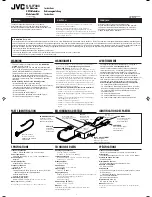
FEC920: USER GUIDE
Page 85
September 18
and it contributes to the total for any period during which it remains valid. Negative input
values are allowed and will cause the totalizer to decrease in value for negative values.
The total increases with positive values.
If the input lies outside the region defined by these CutOff parameters then it will be
ignored and not contribute to the total.
Many applications do not wish to use negative values and so LowCutOff would then
normally be set to 0. Occasionally though, calibration errors at the low scale end could
cause unacceptable errors in the total. In these circumstances, it may be necessary to
consider setting LowCutOff to a small positive value.
An example where this may be needed is when a process has a very low input value for
long periods of time interspersed with short periods of high input values. The cumulative
effect of slightly inaccurate low input values for long periods could then reduce the
accuracy of the overall total recorded.
Thoughtful use may produce an increase in the overall accuracy of the total; inappropriate
use could introduce significant inaccuracy.
Input1
The value of the source. May be entered manually, or this parameter can be wired from
an external channel PV. Input1 is the input signal representing an external measurement
which is in the form of Units/Time-Unit, i.e. a rate. The sampling rate internal to the block
is fixed at the instrument tick rate of eight times/second, taking one sample every 125ms.
Period
The Period parameter divides the signal being applied to Input1 by the number which is
needed to generate a Total PV which is scaled in appropriate time units. There is a
selection of preset values available for the Period parameter. These are listed in Table 1
below. The totalizer equation works in seconds. If the totalized channel units are other
than ‘per second’, a period scaler different from the default (1 sec) must be used. The
‘Period’ field presents a number of fixed periods from 0.125 seconds to 24 hours for
selection.
Preset
Setting this to ‘Yes’ causes the totalizer to adopt the Preset Value. The field returns
immediately to ‘No’. The totalizer can also be pre set by an external source ‘wired’ to this
parameter.
Preset Value
Allows the entry of a value, from which the totalizer is to start incrementing or
decrementing. The direction of the count is set by the sign of the units scaler: positive =
increment; negative = decrement.
Rollover
This is the rollover output which will be set for one execution cycle when the totalizer rolls
over. This output can be used to expand the range of the totalizer by wiring it to the Trigger
input of a counter.
Rollover Value
This is the value at which the totalizer will roll over to 0. It is configurable (default
1,000,000). When the totalizer rolls over the difference between the rollover value and the
calculated output will be added to 0.
Example 1: with a rollover value of 1000, a current output of 999 and an input of 5, then
the output will become 4.
Example 2: with a rollover value of -1000, a current output of -999 and an input of
-5, then the output will become -4.
In both examples, the Rollover output will be set for 1 execution cycle.
Many applications do not require very large values to be totalized and can be scaled so
that the Rollover Value will never be reached. The instrument default value of 10^6 is
generally satisfactory for these. If, however, higher values are expected, a larger Rollover
value than this will have to be used. When configuring very large values the number stored
on the instrument display may be slightly larger or slightly smaller. This happens because
the numbers are stored in the instrument in IEEE representation as used by all computing
systems to save space. The trade-off is that very large values are stored with a small
inaccuracy, which increases as the value being stored increases. As an example, if a
value of 9,999,999,999,999 is entered into the instrument screen as the Rollover value, it
is read back on the instrument panel as 9,999,999,827,968. The inaccuracy caused by the
compression amounts to 0.02 parts per million, considerably smaller than the inaccuracy
associated with the input channel which is being used to generate the input to the totalizer.
A5E45696052A Rev-AA
















































